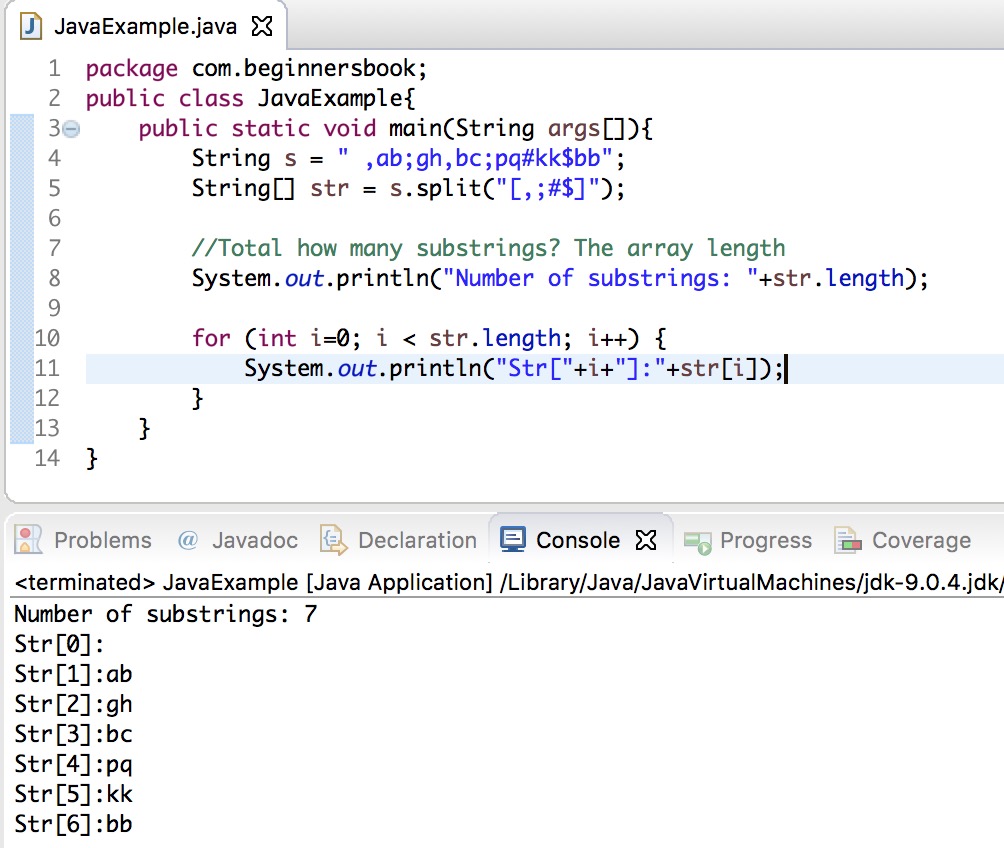
Java rejex characters full#
Have a look at Character.UnicodeScript for the full list of supported scripts.

To match only Latin characters \p+$") // Chrome might not show these characters. Various arguments can be passed with curly braces to \p. Luckily Java's supports matching Unicode characters with \p. For example, these classes exclude characters like öòóô or äáàâ which are used in many western and central European languages. Standard regular expression character classes like or \w (word character) are not suitable for matching Latin characters, they are far too restrictive. It turned out that I was completely wrong. My first impression was that this cannot be done with regular expressions. The contents of each group can then be queried using the methods of this interface for further operations if required.Recently I needed to check user input for non Latin characters. Subsequent groups are then numbered accordingly as they appear in the regular expression. One additional group is also created for the entire regular expression, which is called group number 0 by default. The result of a match operation is divided into groups, where each group is a pair of parentheses in the regular expression. This is exactly what the MatchResult interface does for us. Since our end goal is to find a match of a pattern in our input, we also need a good way to store the result of our match operation and query it to get meaningful information out of it. This interface fundamentally represents the results of a match operation. Returns a Stream of type String, from given input around matches of this pattern Returns a literal pattern String for the given String s A Java regular expression is a special sequence of characters that helps us to match or find other strings or sets of strings, using a specified syntax held. This is illustrated in detail in the next section when we discuss the Matcher Class. These are some of the common symbols we can use to formulate our regular expression in Java.Ĭreates a Matcher object that can be used to match the input parameter against our Pattern object. Let’s now look at the various types of special characters we can use in a regular expression: 1.

This is where a regular expression can solve our problem. However, if you were to do something more complex like validating whether a given string is a valid email address or not, it would be extremely tedious to perform with these methods. Some of you who have been using Java 8 may already be familiar with certain String methods like equals(), contains(), replaceAll(), etc. In the subsequent sections, we will discuss one of the most widely accepted syntaxes which are used in popular programming languages like Java and Perl.


Now, what do we need in our hands, to effectively describe this pattern? Just like any language needs to have a well-defined set of rules in order to make sense out of it, we also need a well-defined framework and set of rules for regular expressions.
Java rejex characters password#
Have you ever wondered how a browser or a server is able to perform these validations? How is it able to compute whether our input email address and username is valid or not? How is it able to figure out whether our password meets the minimum security requirements? All these checks are in fact performed by computers through the use of regular expressions, either in our client side code, server side code, or maybe even a combination of both! Through this article we will see how Java programs are able to effectively compute and recognize these patterns, which can often be very difficult for us humans to do.


 0 kommentar(er)
0 kommentar(er)
